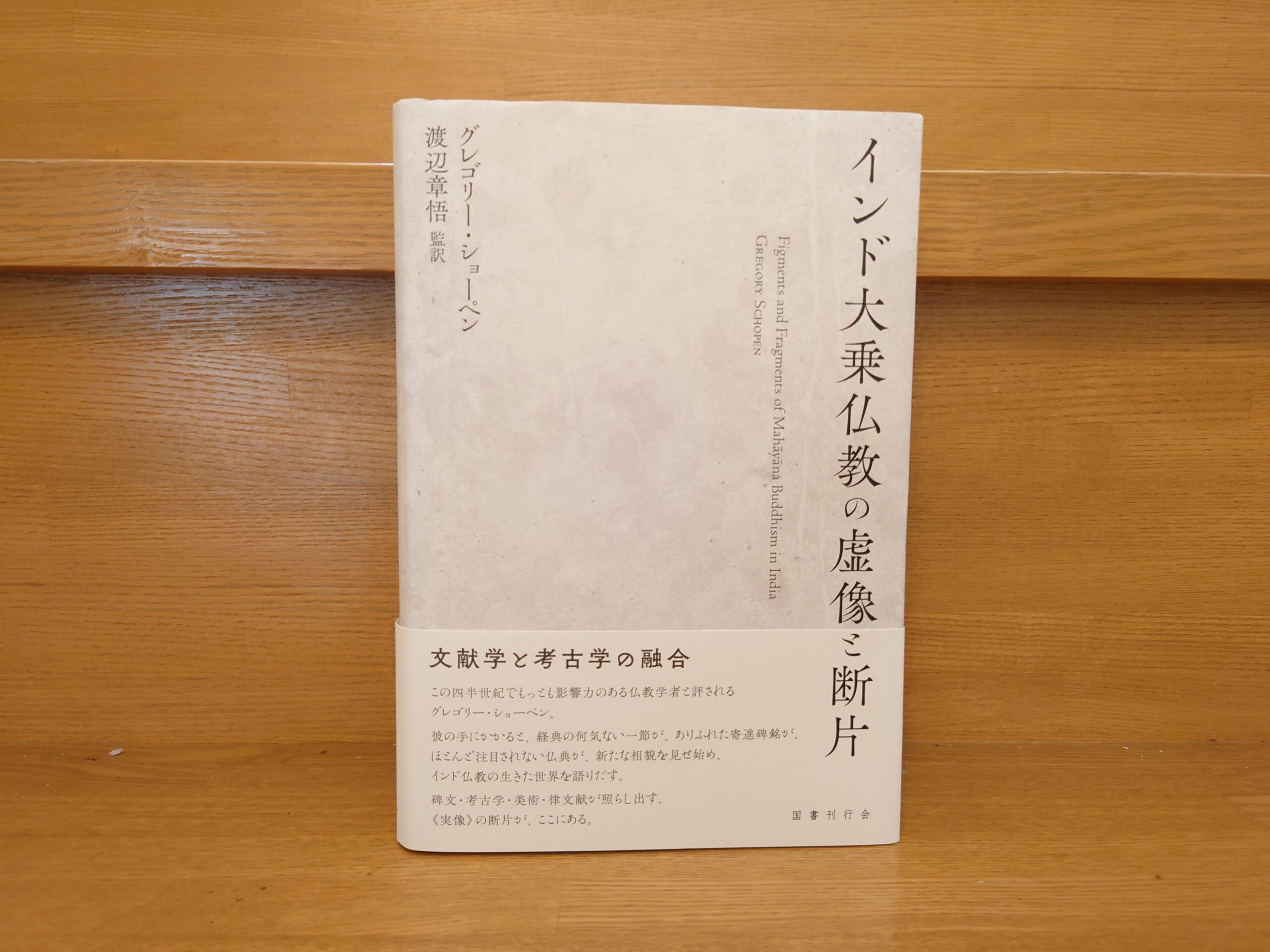G. Schopen, "False Images and Fragments of Indian Mahayana Buddhism" Summary and Comments - The latest collection of articles by the great scholar who revolutionized the study of Indian Buddhism!
The book we present here is "The False Images and Fragments of Indian Mahayana Buddhism," written by Gregory Schopen and translated by Shogo Watanabe, published in 2022 by Kokushokan Publishing House.
Let's take a quick look at the book.
Gregory Schopen has been described as the most influential Buddhist scholar of the past quarter century. In his hands, ordinary passages of scripture, commonplace inscriptions, and rarely noticed Buddhist scriptures begin to take on new forms, revealing the living world of Indian Buddhism.
AmazonProducts Page.
Gregory Schopen (*in the previous article, he was referred to as Schopen in this work, but will be referred to as Schopen from here on).Monastic Life in India During the Rise of Mahayana Buddhism.and the current work, "False Images and Fragments of Mahayana Buddhism," was published in 2022, making it truly Schopen's latest collection of essays.
The "Supervisor's Afterword" describes the book as follows
The 14 papers included in this book are several works that serve as a starting point for Chopin, including some that were published in the early stages of his career and others that were published for the first time based on work that had already been written.
The first half of the book consists of six chapters in "Figments" and eight chapters in "Fragments," but the first half is mainly an attempt to interpret the "real image" of Buddhism through the literature of sutras, and most of the articles depict the historical development of Buddhism by criticizing existing Buddhist thought. In this sense, the first half of the book is a "false image" and the second half is a "real image. In this sense, he probably chose the term "imaginary image.
The latter half of the book attempts to reveal the living Buddhist beliefs, or "real image," by deciphering the background of the fragments, or "fragments" as objects, from concrete and fragmentary materials such as inscriptions, wall paintings, and stupas.
Although there are only three original articles included in this book, chapters 4, 9, and 13, the previously published articles have been updated by supplementing them with notes or by writing new notes. Most of these are translated into Japanese for the first time in this translation, but only the first chapter has already been translated into Japanese (Kotani Shinchiyo's translation of "Mahayana Buddhism: The Era of the Rise and Fall of Buddhism in India," Shunju-sha, 2000; new edition, 2018). This article is based on seminar and lecture transcripts at Otani University; the original manuscript was published in The Eastern Buddhist (2000). While the content of the text remains the same, each of the notes in this book has been supplemented with the latest research results, and about 10 new items have been added to update the information. In this sense, some of the information in this book may be beneficial. (The text has been updated with the latest research results and about 10 new entries.)
In addition, all the papers in this book take the Middle Mahayana Buddhism into account, elucidating the origins of the early Mahayana, the practice of monasticism, Amida worship, Avalokitesvara worship, bone worship, and grave and burial issues through archaeological sources such as inscriptions, wall paintings, and stupas. Among them, the structure of the book, which discusses the reality of Buddhist beliefs by juxtaposing the behavior of the deceased father toward his brother Chopen, who died prematurely, as depicted in the acknowledgments of the book, and the meaning of the stupas analyzed in the last chapter, is, contrary to his expectations, well organized as a single book.
Kokushokan, Gregory Schopen, translated by Shogo Watanabe, "False Images and Fragments of Indian Mahayana Buddhism," p. 422-423.
This work is sure to be another exciting read with the Schopen section in full swing.
I was particularly impressed by Chapter 3, "Buddha's Remains and the Work of Bhikkhus," and Chapter 8, "The Amitabha Inscriptions of the Kushanas and the Characteristics of the Early Mahayana in India."
Primitive Buddhism does not hold funerals. There is no memorial service for the remains. Japanese Buddhism, on the other hand, holds funerals and makes offerings to ancestors. This is wrong as Buddhism.
Although this criticism still persists, in fact, Schopen's theory reveals that this criticism itself is no longer academically valid. Archaeological evidence is revealing that the existence of the remains was important even to the Indian Buddhists of the time. This was a stimulating article.
Also, as a Shin Buddhist monk, the episode of the inscription on the Amida Buddha statue was very interesting to me.
The current work, "False Images and Fragments of Indian Mahayana Buddhism," offers a variety of perspectives on how Mahayana Buddhism was born and developed.
It is too specialized to be recommended as an introduction to Buddhism, but it is a most thrilling and stimulating book for those who wish to look more closely at what Mahayana Buddhism is all about.
Why not pick one up?
The above is "G. Schopen, "False Images and Fragments of Indian Mahayana Buddhism" - The latest collection of articles by the great scholar who revolutionized the study of Indian Buddhism! The above is the latest collection of papers by G. Schopen, the great scholar who revolutionized Indian Buddhist studies!
Next Article.
Click here to read the previous article.
Related Articles





































